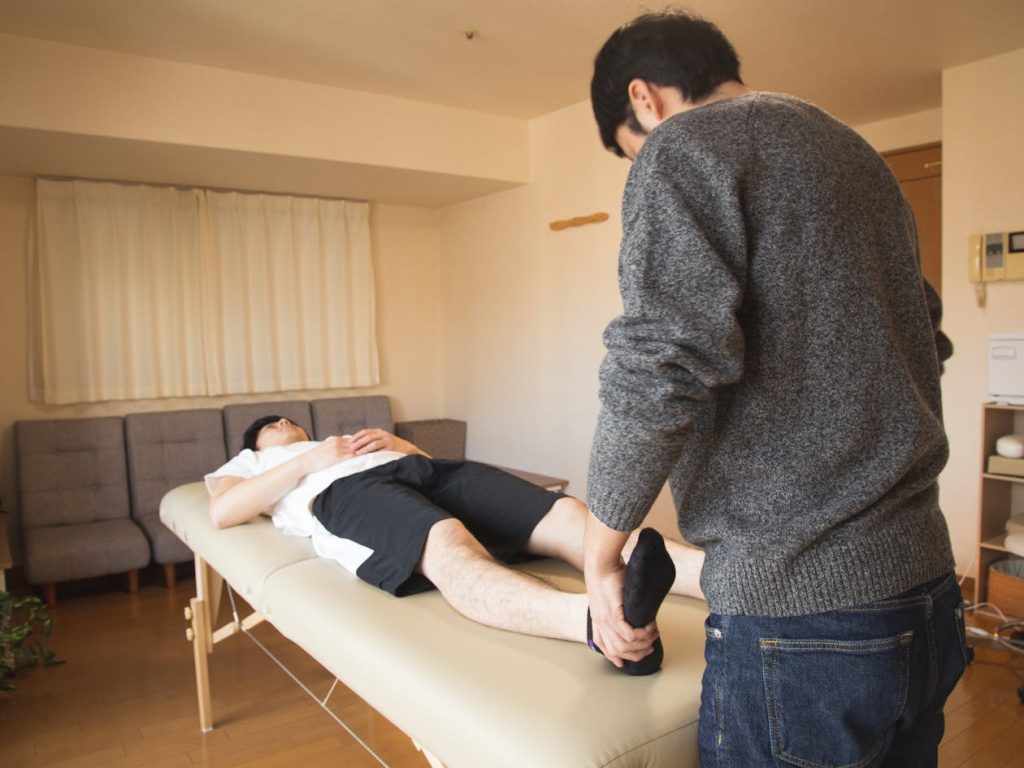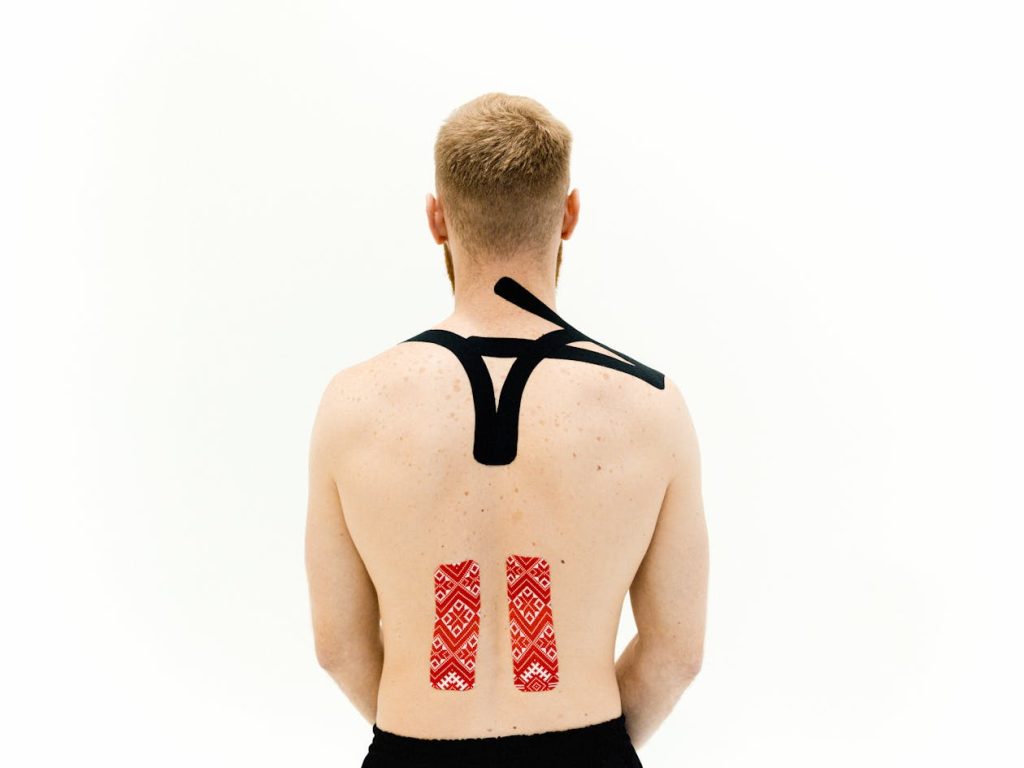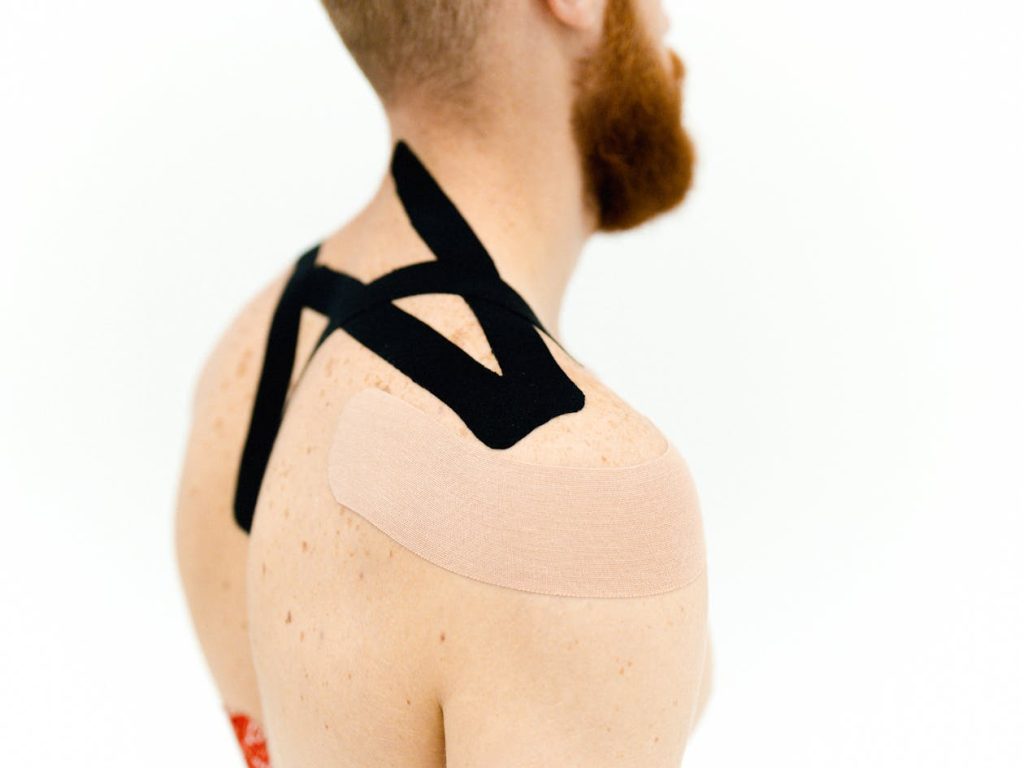Your cart is currently empty!
Man in Twenties Went for Neck Adjustment With Chiropractor and Now Has Locked-in Syndrome

In October 2015, a healthy 24-year-old athlete walked into a chiropractic office for what should have been a routine neck adjustment. Within hours, his life would be forever altered in ways that defy imagination. What happened next would expose catastrophic failures in emergency medical care and result in one of the largest malpractice verdicts in the state of Georgia’s history.
Jonathan Buckelew had always been active, playing nearly every sport and maintaining the kind of physical fitness that most people envy. He had no reason to expect that a simple appointment would transform him from an independent young man into someone entirely dependent on others for every aspect of survival.
What followed his chiropractic visit would reveal shocking gaps in emergency medical protocols and diagnostic procedures that allowed a preventable tragedy to unfold. Nearly a decade later, Jonathan’s story serves as both a devastating example of medical negligence and a stark warning about the fragility of the systems we trust with our lives.
When a Routine Appointment Turns Into a Nightmare
Jonathan Buckelew approached his chiropractic appointment like millions of Americans do every year—seeking relief for minor neck discomfort through what most consider a safe, non-invasive treatment. At 24 years old, he represented the picture of health and vitality that characterized his entire life up to that point.
During the neck adjustment procedure, something went catastrophically wrong. Jonathan suddenly became dizzy, disoriented, and unresponsive, displaying symptoms that should have immediately triggered emergency medical protocols. What had begun as a routine healthcare visit quickly transformed into a life-threatening medical crisis.
Emergency medical services rushed Jonathan to North Fulton Hospital, where his family expected him to receive the immediate, expert care that emergency rooms are designed to provide. Instead, they would witness a series of diagnostic failures that would forever change their understanding of medical safety and competence.
Jonathan’s case represents one of countless visits to healthcare providers that millions of people make annually, trusting that medical professionals will recognize and respond appropriately to emergencies when they arise.
Hospital Doctors Miss Critical Signs for Hours

Upon arrival at North Fulton Hospital’s emergency room, Jonathan exhibited clear signs and symptoms that should have immediately alerted medical staff to the possibility of stroke. However, multiple healthcare providers failed to recognize these warning signs, allowing precious hours to pass without appropriate intervention.
“Jonathan was having a stroke when he came to the hospital and they missed it,” said attorney Lloyd Bell. “The people who were responsible for reading the radiographs misread it. The ER doctor saw this patient was having all these signs and symptoms of stroke and never called a stroke alert, and they had policies in place that they were supposed to follow certain protocols to reach the correct diagnosis, and they didn’t follow their policies and procedures.”
Court evidence revealed that Dr. Matthew Womack, the emergency room physician, failed to communicate critical information to the consulting neurologist. He didn’t mention that Jonathan had visited a chiropractor earlier that day, nor did he report that the patient had experienced seizure-like events—both crucial pieces of information for accurate stroke diagnosis.
Radiologist James Waldschmidt compounded the diagnostic failures by missing key information on brain scans that could have revealed Jonathan’s true condition. Such oversights in emergency medical settings can mean the difference between full recovery and permanent disability.
What Locked-In Syndrome Means for Patients

As hours passed without proper treatment, Jonathan’s condition deteriorated into one of medicine’s most terrifying outcomes: locked-in syndrome. This rare neurological disorder results from damage to specific areas of the brain stem, creating a prison of consciousness within a paralyzed body.
Locked-in syndrome patients remain fully conscious and aware of their surroundings but lose the ability to move or speak due to complete paralysis of nearly all voluntary muscles. Only eye movements and blinking typically remain under the patient’s control, creating an existence where mental capacity remains intact while physical capabilities vanish entirely.
For Jonathan, now 34, this means living each day fully aware of his surroundings but unable to express himself verbally or move independently. He experiences every emotion, understands every conversation, and feels every frustration of his condition while being unable to communicate these feelings in conventional ways.
Medical professionals describe locked-in syndrome as one of the most psychologically challenging conditions a patient can face, as the disconnect between mental awareness and physical capability creates unique forms of isolation and dependence.
Family Transforms Home Into Medical Facility
Jonathan’s parents, Jack and Janice Buckelew, have completely restructured their lives and home to provide the intensive care their son requires. What was once a typical family residence has evolved into a sophisticated medical facility, equipped to handle the complex neurological care needs of its patients.
“We do work really hard to keep at least two months ahead on the supplies,” Jack Buckelew explains about their meticulous preparation. “We created an ICU, honestly.”
Their garage now serves as a storage room for medical supplies, stocked with the equipment necessary to maintain Jonathan’s health and comfort. Every room in the house has been reconfigured to accommodate his needs, from specialized bedroom setups to physical therapy areas designed for his condition.
Round-the-clock nursing care supplements the family’s caregiving efforts, as Jonathan requires constant monitoring and assistance with all basic life functions. His parents have become medical professionals themselves, learning to operate complex equipment and manage medical protocols that most people never encounter.
How Jonathan Communicates in Silent World

Despite his physical limitations, Jonathan has developed communication methods that allow him to express his thoughts, needs, and desires to family members and caregivers. These adaptive techniques represent both his determination to maintain a connection with the world and his family’s commitment to preserving his autonomy where possible.
Blinking serves as Jonathan’s primary method for answering yes-or-no questions, creating a basic but functional communication system that allows him to participate in decisions about his care and daily activities. More complex communication occurs through a specialized keypad that he operates by typing messages using his nose.
Family members have positioned Jonathan’s favorite spot directly in front of a fish tank, where he finds visual stimulation and apparent enjoyment watching the constant motion of aquatic life. Such simple pleasures take on profound significance for someone whose world has been reduced to what he can observe and experience through limited sensory input.
His parents have learned to interpret subtle variations in his eye movements and facial expressions, developing an intimate understanding of his communication attempts that goes beyond formal assistive technologies.
Legal Battle Reveals Shocking Medical Negligence
Jonathan’s family pursued legal action against multiple healthcare providers involved in his care, ultimately securing what became the largest emergency room malpractice verdict in Georgia history. A Fulton County jury awarded the family $75 million after determining that two physicians had been “grossly negligent” in their treatment decisions.
Evidence presented during the trial revealed systematic failures in emergency medical protocols that should have prevented Jonathan’s tragic outcome. Hospital policies existed specifically to address stroke recognition and treatment, but these protocols were not followed during his critical care period.
The jury found that Dr. Womack and radiologist Waldschmidt had violated standard care practices through their diagnostic failures and communication breakdowns. Interestingly, the chiropractor who performed the initial neck adjustment was not found liable, suggesting that the primary responsibility lay with emergency medical providers who failed to respond appropriately to Jonathan’s condition.
The massive financial award reflects both the severity of Jonathan’s injuries and the jury’s assessment of the preventable nature of his condition. However, family members emphasize that no amount of money can restore what Jonathan has lost.
Missing Stroke Statistics That Should Terrify Everyone

Jonathan’s case represents a far more widespread problem in emergency medical care than most people realize. According to Johns Hopkins Medicine’s Armstrong Institute Center for Diagnostic Excellence, minor strokes are missed by doctors 30 to 50 percent of the time—a statistic that should alarm anyone who might someday require emergency medical care.
Approximately 12 million Americans are affected by diagnostic errors annually, including missing, incorrect, or delayed diagnoses that can have life-altering consequences. One-third of these misdiagnosed patients suffer permanent harm as a result of medical failures, creating a population of victims whose conditions could have been prevented with proper care.
Brain stem strokes, like the one Jonathan experienced, present particular diagnostic challenges because their symptoms can be subtle or easily confused with other conditions. However, the time-sensitive nature of stroke treatment makes rapid, accurate diagnosis essential for preventing permanent damage.
Such statistics reveal that Jonathan’s experience, while extreme in its consequences, reflects systemic problems in emergency medical care that affect hundreds of thousands of patients annually.
Price Breakdown of a Life Forever Changed
Financial compensation for Jonathan’s injuries was divided into categories that attempt to quantify different aspects of his losses. He received $9 million for previous medical expenses already incurred since his injury, reflecting the enormous costs associated with managing locked-in syndrome.
Future medical costs were estimated at $20 million, acknowledging that Jonathan will require intensive care for the remainder of his life. Such projections consider not only direct medical expenses but also the specialized equipment, home modifications, and professional caregiving services necessary for his survival.
Pain and suffering compensation totaled $46 million, representing the jury’s attempt to place monetary value on the psychological and emotional impact of Jonathan’s condition. However, family members emphasize that financial awards cannot restore physical capabilities or undo the psychological trauma of locked-in syndrome.
“I really feel like there’s no real justice for somebody who lost every aspect of his life,” Jack Buckelew reflects about the limitations of legal remedies for catastrophic medical injuries.
Father’s Heartbreaking Reality Check About Justice

Beyond financial considerations, Jonathan’s father provides sobering insights into the daily reality of caring for someone with locked-in syndrome. Despite the family’s determination to provide the best possible quality of life, they face constant reminders of what has been permanently lost.
“We’re just focusing on what can we do now; how can we keep him as happy as possible; and how can we give him the best life possible,” Jack Buckelew explains about their current priorities.
The emotional toll extends beyond practical caregiving challenges. “There are some days where he’s like ‘pull the plug,’ so those are the tough days,” Jack reveals about Jonathan’s ongoing psychological struggles with his condition.
Such statements underscore the complexity of locked-in syndrome, where patients must confront not only physical limitations but also the psychological burden of complete dependence on others for survival. Family members witness their loved one’s frustration while feeling helpless to provide meaningful relief.
Appeals Process Drags On While Family Copes
Legal proceedings continue as Dr. Womack has appealed the verdict to Georgia’s Supreme Court, seeking to overturn the jury’s findings and financial award. An appellate court initially affirmed the lower court’s ruling, but the appeals process allows for continued legal challenges, extending uncertainty for Jonathan’s family.
Radiologist Waldschmidt also filed an appeal but later withdrew it, accepting the jury’s verdict regarding his role in the diagnostic failures. Such legal maneuvering represents standard practice in significant malpractice cases but prolongs resolution for families already dealing with catastrophic injuries.
While legal battles continue, Jonathan’s condition remains unchanged, and his family must navigate the complex realities of long-term care regardless of final legal outcomes. Their focus has necessarily shifted from seeking justice to maximizing Jonathan’s remaining quality of life within the severe constraints imposed by his condition.
Legal victories, however significant, cannot restore the athletic young man who walked into a chiropractic office nearly a decade ago expecting nothing more than minor neck relief.
